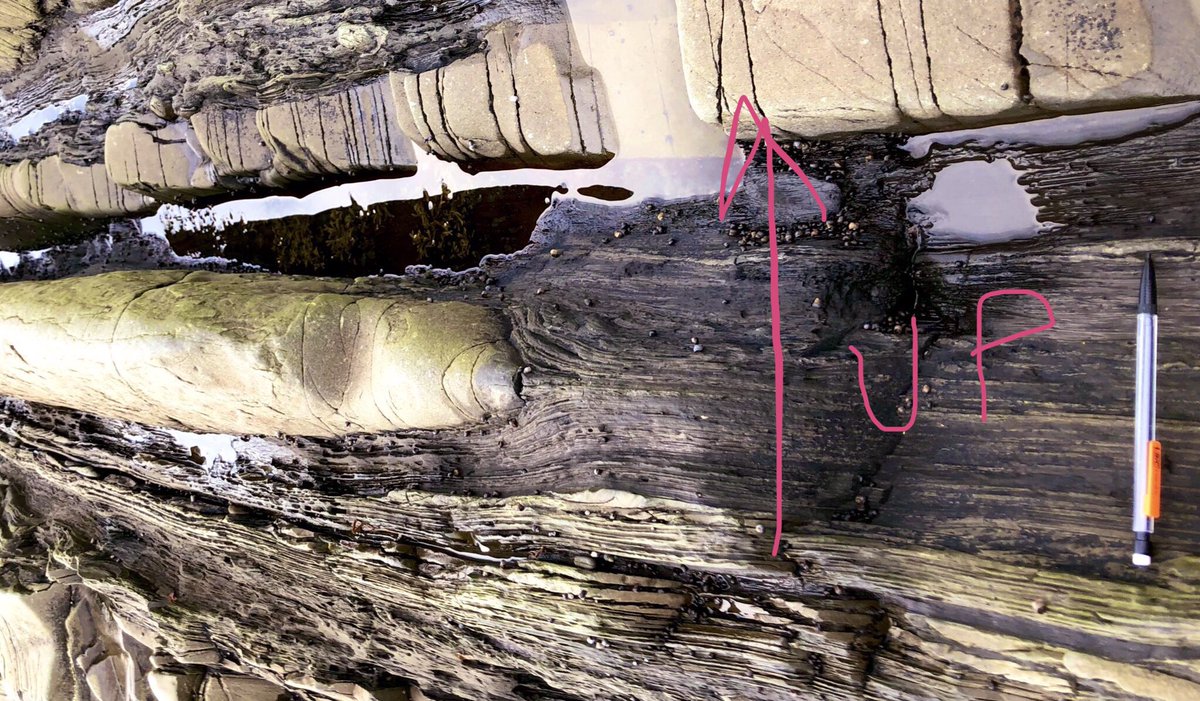The landslide deposits (turbidite) is that tall yellow sandy bit.
They can be fast or slow.
More: gizmodo.com/when-freshwate…
It only has 6 rules, but you won’t need all of them to read these particular rocks.
The pencil indicates we’re looking straight down at the ground, edge-on to history.
@ZaneJobe’s caption tells us “up” is right.

This is a small area (thanks, pencil!) with no interruptions, so we can skip this one.
4. If something happens to a rock, the rock must’ve existed before it happened. We’re big on establishing rocks can’t time-travel.
5. If a rock has pieces of another rock, the pieces come from an older rock.
6. Found fossils? That’s how old your rock is.
Imagine a sandy beach at low tide, or how a lake bottom feels when you wade out. Is it hard or soft? Does it squish between your feet?
If you sand still in the surf line with wee waves crashing against your shins, does sand move above &/or below your feet? How?

















